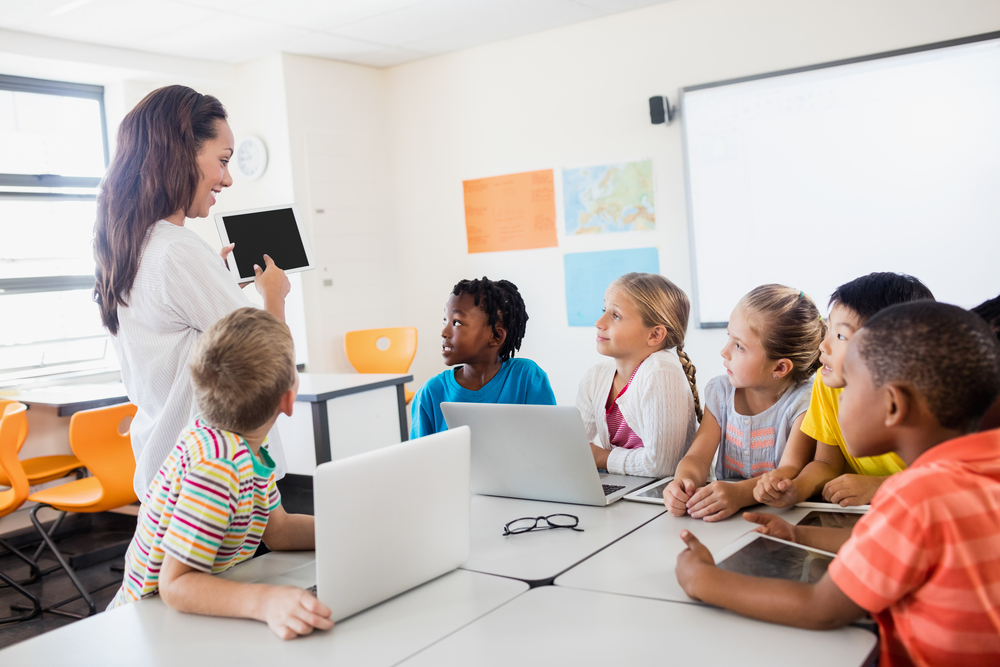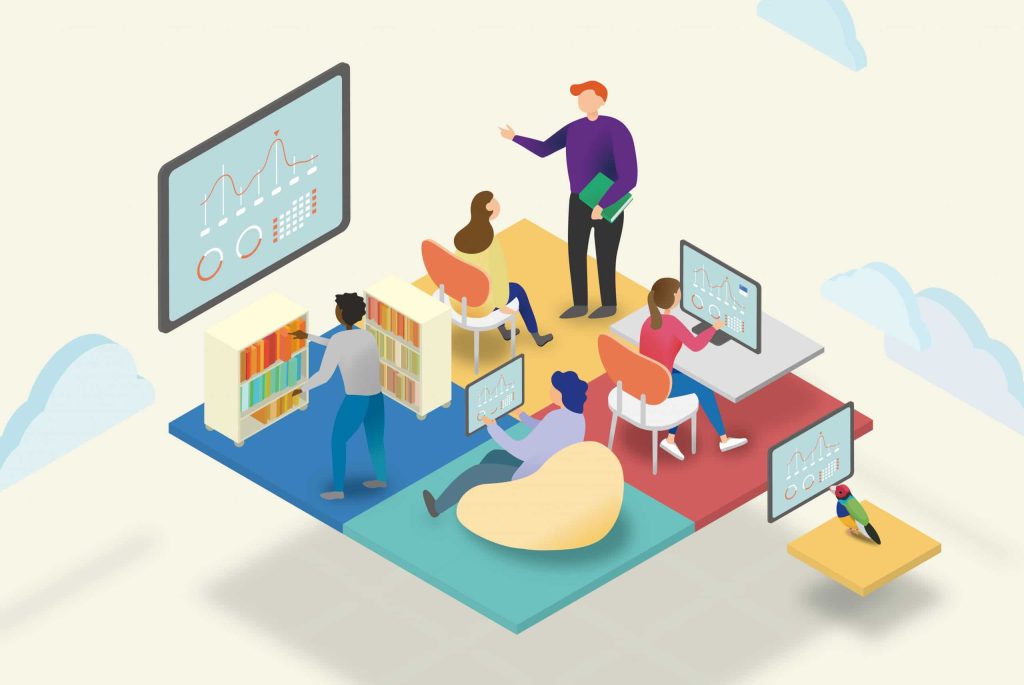Technology has revolutionized nearly every aspect of modern life, and education is no exception. From interactive whiteboards to artificial intelligence (AI)-powered tutoring, classroom technology is reshaping the way students learn and teachers instruct. With the integration of digital tools, learning has become more engaging, accessible, and personalized.
In this article, we will explore the various tools transforming education, their benefits, and how they are shaping the future of learning.
The Evolution of Classroom Technology

Classroom technology has come a long way from traditional blackboards and printed textbooks. The early 2000s saw the introduction of computers and projectors, which made learning more visual. Later, interactive whiteboards and tablets enhanced student engagement. Today, advanced technologies like virtual reality (VR), artificial intelligence (AI), and cloud-based learning platforms are making education more immersive and accessible than ever before.
With these advancements, students can learn at their own pace, collaborate more effectively, and access educational materials from anywhere in the world. Teachers, on the other hand, benefit from automation, data-driven insights, and new ways to deliver lessons.
Essential Classroom Technology Tools
Technology in the classroom can be categorized into various tools that serve different educational purposes. Here are some of the most impactful technologies shaping modern education.
A. Interactive Whiteboards and Smart Boards
Interactive whiteboards, such as SMART Boards and Promethean ActivPanels, have replaced traditional blackboards in many classrooms. These tools allow teachers to display digital lessons, write on the screen, and interact with multimedia content.
Benefits:
- Enhances student engagement through visual and interactive learning.
- Allows real-time collaboration with students.
- Supports integration with educational apps and online resources.
B. Learning Management Systems (LMS)
A Learning Management System (LMS) is a digital platform that enables teachers to manage courses, assign homework, and track student progress. Popular LMS platforms include Google Classroom, Moodle, Blackboard, and Canvas.
Benefits:
- Provides easy access to course materials and assignments.
- Enables communication between students and teachers.
- Tracks student performance and provides analytical insights.
C. Tablets and Laptops
Many schools have adopted one-to-one computing, where each student is given a tablet or laptop for learning. Devices such as iPads, Chromebooks, and Microsoft Surface tablets are widely used in classrooms.
Benefits:
- Encourages digital literacy from an early age.
- Provides access to a vast array of educational apps and online resources.
- Enables interactive and personalized learning experiences.
D. Cloud-Based Collaboration Tools
Cloud-based tools like Google Workspace (Google Docs, Slides, and Sheets) and Microsoft Office 365 allow students and teachers to collaborate on assignments in real time.
Benefits:
- Encourages teamwork and remote collaboration.
- Saves time by automating document sharing and grading.
- Provides secure storage for educational materials.
E. Educational Apps and Gamification
Gamification—integrating game-like elements into learning—has proven to be an effective way to boost student engagement. Educational apps such as Kahoot!, Duolingo, Quizlet, and Prodigy use quizzes, rewards, and challenges to make learning fun.
Benefits:
- Improves retention of information through interactive learning.
- Motivates students with rewards and competition.
- Makes complex subjects more engaging and understandable.
F. Virtual and Augmented Reality (VR & AR)
VR and AR technologies are making learning more immersive. Google Expeditions, Oculus VR, and Merge Cube allow students to explore historical sites, conduct virtual science experiments, and visualize 3D models.
Benefits:
- Provides hands-on learning experiences.
- Enhances engagement by making lessons interactive.
- Allows students to explore concepts beyond traditional textbooks.
G. Artificial Intelligence (AI) and Adaptive Learning
AI-powered tools, such as Chatbots, AI tutors, and personalized learning platforms like Knewton and Squirrel AI, adapt to individual learning styles, providing customized learning experiences.
Benefits:
- Identifies students’ strengths and weaknesses to tailor learning paths.
- Provides instant feedback and tutoring support.
- Saves teachers time by automating administrative tasks.
H. 3D Printing in Education
3D printing is transforming STEM (Science, Technology, Engineering, and Mathematics) education by allowing students to create physical models of complex concepts.
Benefits:
- Encourages hands-on, experiential learning.
- Helps students grasp difficult concepts through visualization.
- Promotes creativity and innovation.
The Benefits of Classroom Technology
Integrating technology into education provides numerous benefits for both students and teachers. Here are some of the most significant advantages:
A. Enhanced Engagement and Motivation
Interactive tools like smartboards, VR, and gamified learning apps make lessons more engaging, encouraging students to participate actively.
B. Personalized Learning
AI-powered platforms and adaptive learning tools cater to individual learning speeds, ensuring that no student falls behind.
C. Increased Collaboration
Cloud-based tools and digital communication platforms enable students to work on group projects and receive feedback from teachers more efficiently.
D. Better Access to Educational Resources
With e-books, online courses, and video tutorials, students can learn beyond traditional textbooks and explore a wealth of knowledge.
E. Prepares Students for the Future
As workplaces become increasingly tech-driven, early exposure to digital tools helps students develop essential skills for future careers.
Challenges of Implementing Classroom Technology
Despite its numerous benefits, integrating technology into education comes with its own set of challenges.
A. Digital Divide and Accessibility Issues
Not all students have equal access to technology. Schools in underprivileged areas may struggle with funding for digital devices and high-speed internet.
B. Teacher Training and Adaptation
Teachers need proper training to effectively use new technology. Some educators may resist change due to lack of familiarity with digital tools.
C. Cybersecurity and Privacy Concerns
With increased online learning, student data privacy and cybersecurity risks are major concerns. Schools must implement strong security measures.
D. Over-Reliance on Technology
While technology enhances learning, excessive screen time and reduced face-to-face interaction can negatively impact social skills.
The Future of Classroom Technology
The future of classroom technology looks promising, with emerging innovations set to further transform education. Some trends to watch include:
A. AI-Powered Tutors and Virtual Assistants
AI chatbots and tutors will provide 24/7 support for students, helping them with homework and answering questions in real-time.
B. Metaverse Learning Environments
With the rise of the metaverse, virtual classrooms and interactive 3D learning spaces could become more common, making education more immersive.
C. Blockchain for Academic Records
Blockchain technology may be used to securely store student records, ensuring data integrity and preventing tampering.
D. More Sustainable Tech Solutions
Eco-friendly devices and energy-efficient classrooms will become a priority to reduce the environmental impact of digital education.
Conclusion
Classroom technology is reshaping education by making learning more engaging, accessible, and personalized. From interactive whiteboards and AI-powered learning platforms to virtual reality and 3D printing, these tools enhance both teaching and student experiences.
While challenges such as the digital divide and cybersecurity concerns remain, continued advancements in technology will pave the way for more innovative and inclusive education solutions. As schools and educators embrace digital tools, the future of learning looks brighter than ever.
With the right balance of technology and traditional teaching methods, classrooms will continue to evolve, preparing students for success in an increasingly digital world. 🚀📚

